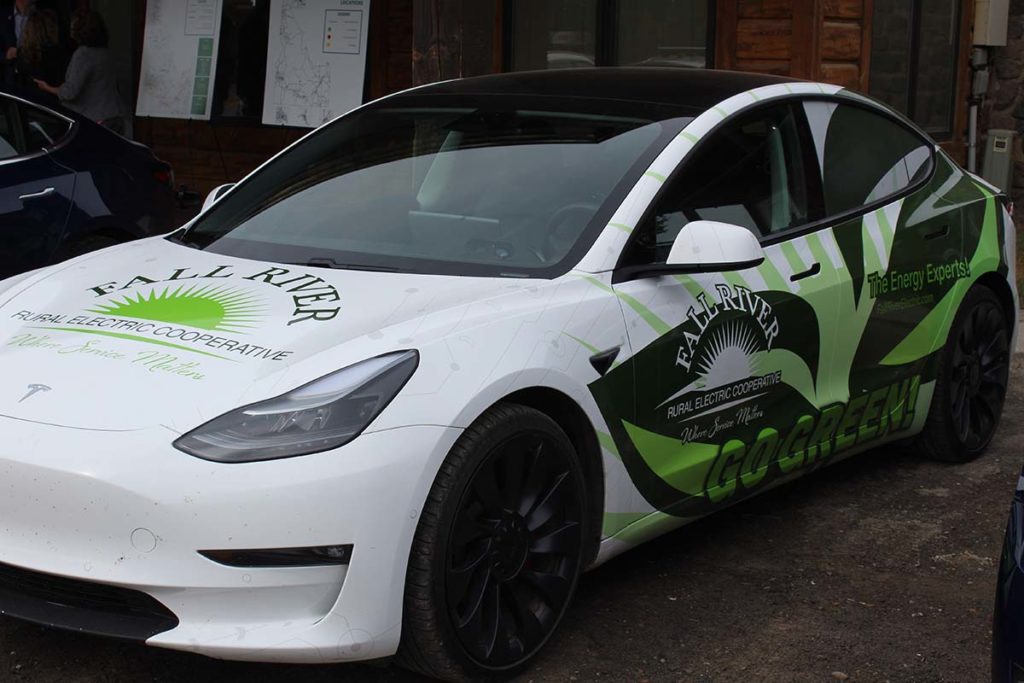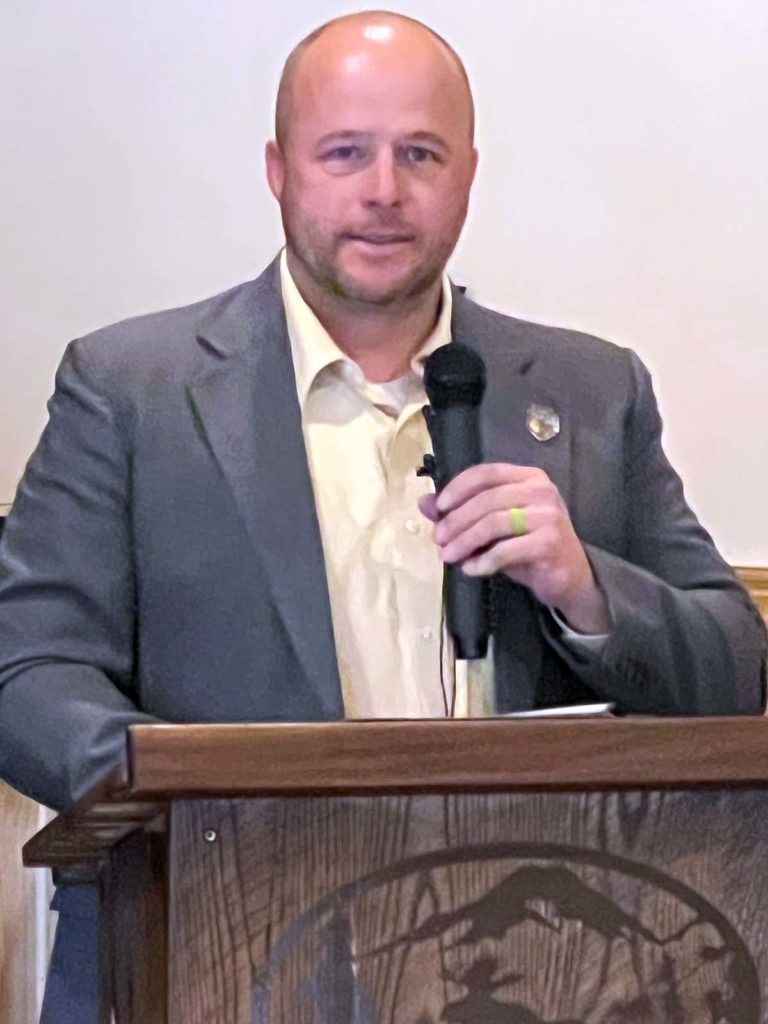
Fall River Rural Electric Cooperative in Idaho is helping create an electric vehicle fast-charging network along major corridors in the intermountain West.
On Sept. 15, co-op leaders joined with state officials from Idaho, Montana and Wyoming to launch the “West Electric Highway” through eight western states, which also include Arizona, Colorado, Nevada, New Mexico and Utah. Participants say it is the largest EV corridor collective in the nation, and they have dubbed it ChargeWest.
The kickoff event was held in Fall River REC’s territory in Island Park, Idaho, to highlight the fact that the Ashton-based co-op will be receiving nearly $865,000 in grants from the state to install a total of five DC fast chargers in three different locations to serve members and visitors. Motorists will be able to charge an EV battery to 80% in about 20 minutes.

“We see a lot of vacation travelers coming to Yellowstone and Grand Teton National Parks, and they come through our service territory to get there,” said Clint Washburn, the co-op’s human resources manager who applied for the grants on behalf of Fall River.
“We just see there’s a huge need for it. I think there are a lot of travelers who don’t bring their EVs now because of the lack of chargers.”
Co-op members have also been requesting public chargers, Washburn said.
“We have a lot of out-of-state members who own cabins in our territory and the Level 1 chargers they have at those cabins can’t charge enough overnight for them to go to Yellowstone the next day.”
The eight states that have come together for ChargeWest want to leverage public-private partnerships to install chargers every 50 miles to ease range anxiety among EV drivers and give them confidence to head into the Rocky Mountains or across wide open stretches of land.
“The intermountain west is becoming one of the most visited places in the United States,” said Tammie Bostick, executive director of Utah Clean Cities and the project lead. “We want the modern traveler to experience the same highways and byways of our western heritage with today’s new electric fuel horsepower.”
EV drivers will pay a per-minute price to plug in to the Fall River REC chargers, which should be in place by the end of next summer. All three sites are near major highways.
“In addition to providing these chargers for the public’s use, operating them will provide Fall River with valuable insight into how chargers affect the grid and better prepare us to safely and economically provide reliable energy and other services which bring value to our membership in the future,” Washburn said at the network launch.
He said the co-op’s goal is not to become the dominant EV charger owner in the region.
“We’re just getting the ball rolling,” Washburn said.
Co-op CEO Bryan Case said Fall River REC’s participation in the charging network is just the latest program by the co-op to showcase clean energy.
“Fall River’s expansion toward providing our members with fast chargers follows our recent efforts of developing a community solar array, building solar and wind demonstration units at area high schools as educational tools for our students, and having our members rent, at no cost, our Tesla EV so they can experience firsthand driving an electric vehicle.”
Erin Kelly is a staff writer for NRECA.